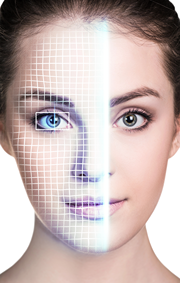For Children’s Safety: How Websites Protect Kids and Teens Online
Children have more access to age-restricted and sensitive content online. While some websites have basic age verification systems in place, let’s face it, anyone can get past them, especially if you’re curious enough to see what’s on these sites.
To protect children and teens during online activities, the US Senate passed two bills in August 2024, namely the Kids Online Safety and Privacy Act (KOSPA) and the Children’s and Teens Online Protection Act (COPPA 2.0).
Both bills aim to keep social media companies accountable for keeping kids safe while they’re on the Internet, and as a response, some platforms have started using biometrics to prevent minors from creating accounts or accessing age-restricted content.
There has been a lot discourse about the pros and cons of biometric security. Although parents have every reason to be concerned about it, biometrics has the potential to keep kids safe, especially at a time when they can access everything with a tap on a screen. Here’s how social media and websites are using biometrics to keep children safe online.
Facial Age Estimation
Depending on how it’s used, biometrics can be a gamechanger or a threat when it comes to protecting individuals online. Since it’s impossible to replicate human characteristics such as fingerprints or facial features, it can be highly useful for things like online banking or digital payments.
However, there’s always the risk of data breaches since poor data management practices can lead to fingerprints or facial scans being compromised. This is why social media platforms and websites should prioritize securing biometric data, especially if they intend to use it to restrict minors.
One such platform that has started implementing stricter measures to verify users’ age is Instagram. Typically, social media sites would just ask users to input their birthday to create an account, but Instagram has started using a facial age estimation software called Yoti for biometric analysis. The software prevents users from representing themselves as older or younger than they really are, which means that it’s not just kids who are prevented from making accounts, but also older people who intend to prey on children and teens online.
To address privacy concerns, Instagram’s owner, Meta Platforms Inc., says that the stills from video selfies are deleted immediately after verification, and adds that Yoti cannot recognize a user’s identity based on their videos or pictures.
Digital ID
Apart from selfies or real-time video clips, biometric systems can also use digital IDs to prove that a person is old enough to access content or use certain platforms. Although there are concerns that they might be accessed by cybercriminals, digital IDs are in fact incredibly safe since they require multi-factor authentication and data encryption, making identity theft nearly impossible.
Certain states, such as Georgia, are now requiring people to submit digital IDs to access pornography websites, or any other site that is deemed to be harmful to minors. Doing so restricts children and teens from viewing explicit material, as well as simulated sex acts or animated porn. Other states that have passed or agreed to pass age verification laws on pornographic websites include Florida, Alabama, Nebraska, Indiana, Arkansas, Idaho, Montana, Mississippi, Oklahoma, North Carolina, Virginia, Utah, and Texas.
The core function of these age verification systems relies on the accurate and secure handling of sensitive personal information. Businesses that must comply with strict regulatory frameworks, particularly in finance and gaming, depend on robust platforms to manage the integrity of identity verification data for KYC services (Know Your Customer) to prevent fraud and maintain legal compliance.
Multi-Authentication Using Biometrics is on the Horizon
It’s only a matter of time before we see popular platforms use multi-authentication processes to prove a user’s identity and protect minors during online activities. Apart from age verification with an ID and selfie capture, websites may use systems for biometric authentication, deepfake detection, and document verification to prevent even the most advanced Internet users from faking their identities. We can also expect these systems to have global coverage, enabling them to access data from different parts of the world.
Protecting kids and teenagers from harmful content, as well as stalkers and cybercriminals, should be a priority at all times. Biometrics can keep children safe while they’re online, but parents and teachers should also do their part to monitor kids’ online activities and educate them on best practices to keep them out of harm’s way while they’re on the Internet.






